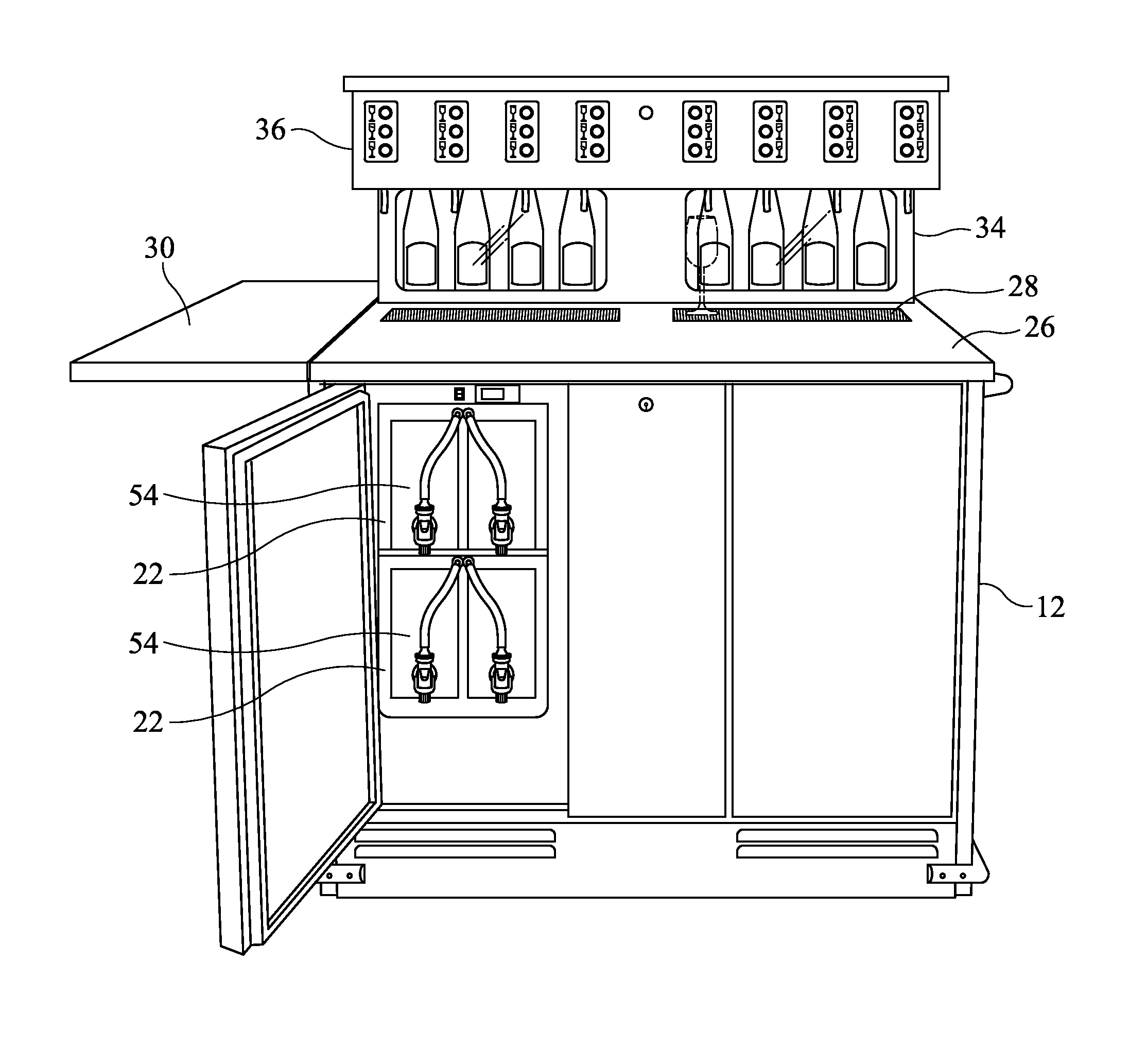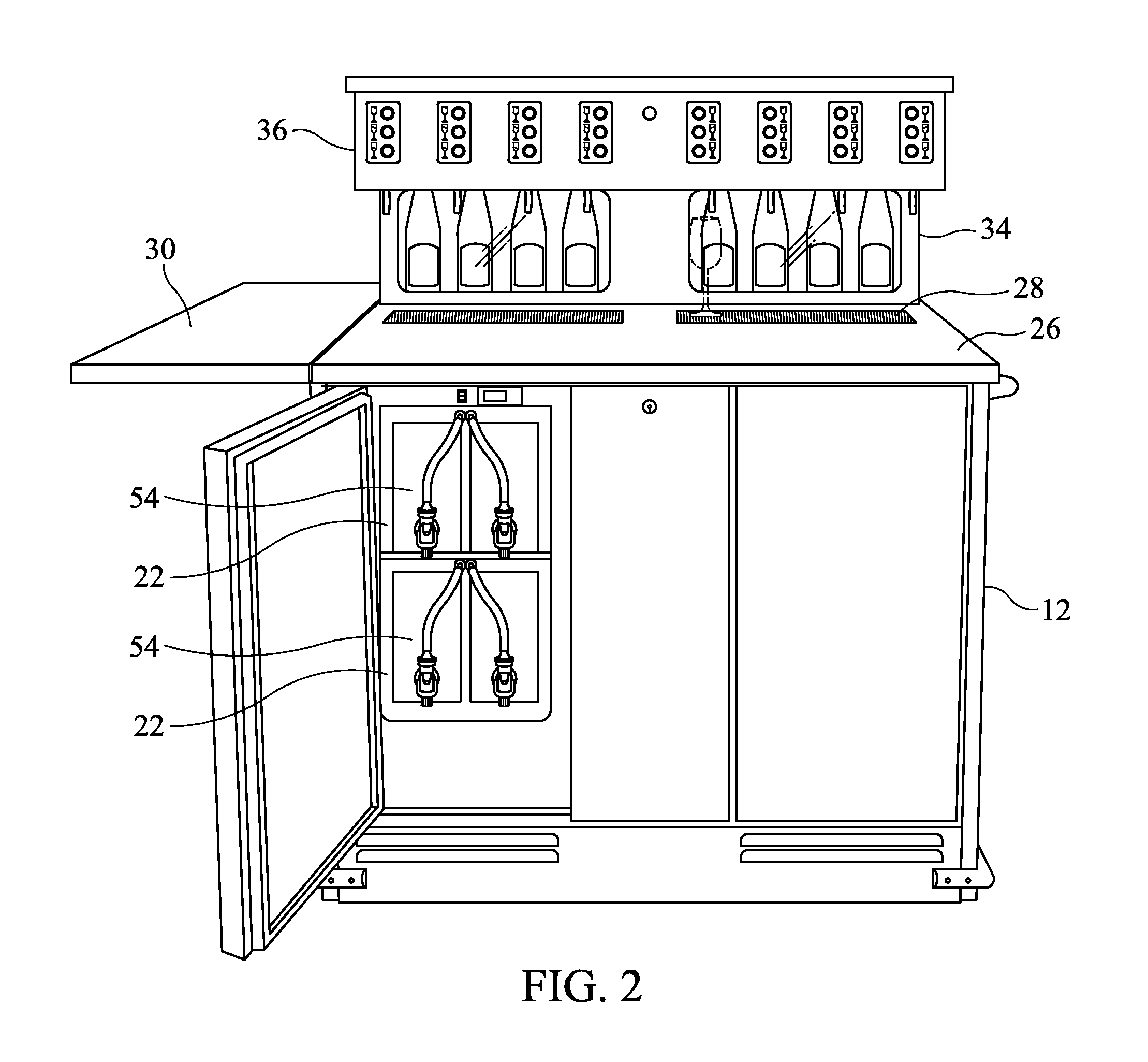Wine dispensing system
a wine and bottle technology, applied in the field of wine dispensing systems, can solve the problems of notoriously susceptible to oxygen degradation, waste of rest of bottles, and substantial cost of wine bottle packaging, so as to save federal and state wine taxes, reduce costs, and avoid unnecessary expenses and risks.
- Summary
- Abstract
- Description
- Claims
- Application Information
AI Technical Summary
Benefits of technology
Problems solved by technology
Method used
Image
Examples
Embodiment Construction
[0034]Referring now to FIGS. 1 and 2, a wine dispenser constructed in accordance with the present invention comprises a stainless steel cabinet 12 mounted on wheels 14. The cabinet has an enclosed lower portion having an interior enclosed by hinged doors 20. The interior of the cabinet includes a number of storage receptacles 22 for retaining box wine containers 54. The interior of the cabinet also includes refrigeration equipment or other temperature control apparatus for maintaining one or more desirable temperatures in the interior of the cabinet.
[0035]The upper surface of the cabinet includes a countertop 26 at the front of the cabinet, and a drain panel 28 at the rear of the countertop for draining liquids or spillage from the counter. In one embodiment, a foldable end panel 30 is mounted on at least one side of the cabinet and can be raised to a horizontal position, as shown in FIG. 2, to serve as additional countertop surface. Alternatively, the panel can be folded downward i...
PUM
 Login to View More
Login to View More Abstract
Description
Claims
Application Information
 Login to View More
Login to View More - R&D
- Intellectual Property
- Life Sciences
- Materials
- Tech Scout
- Unparalleled Data Quality
- Higher Quality Content
- 60% Fewer Hallucinations
Browse by: Latest US Patents, China's latest patents, Technical Efficacy Thesaurus, Application Domain, Technology Topic, Popular Technical Reports.
© 2025 PatSnap. All rights reserved.Legal|Privacy policy|Modern Slavery Act Transparency Statement|Sitemap|About US| Contact US: help@patsnap.com



